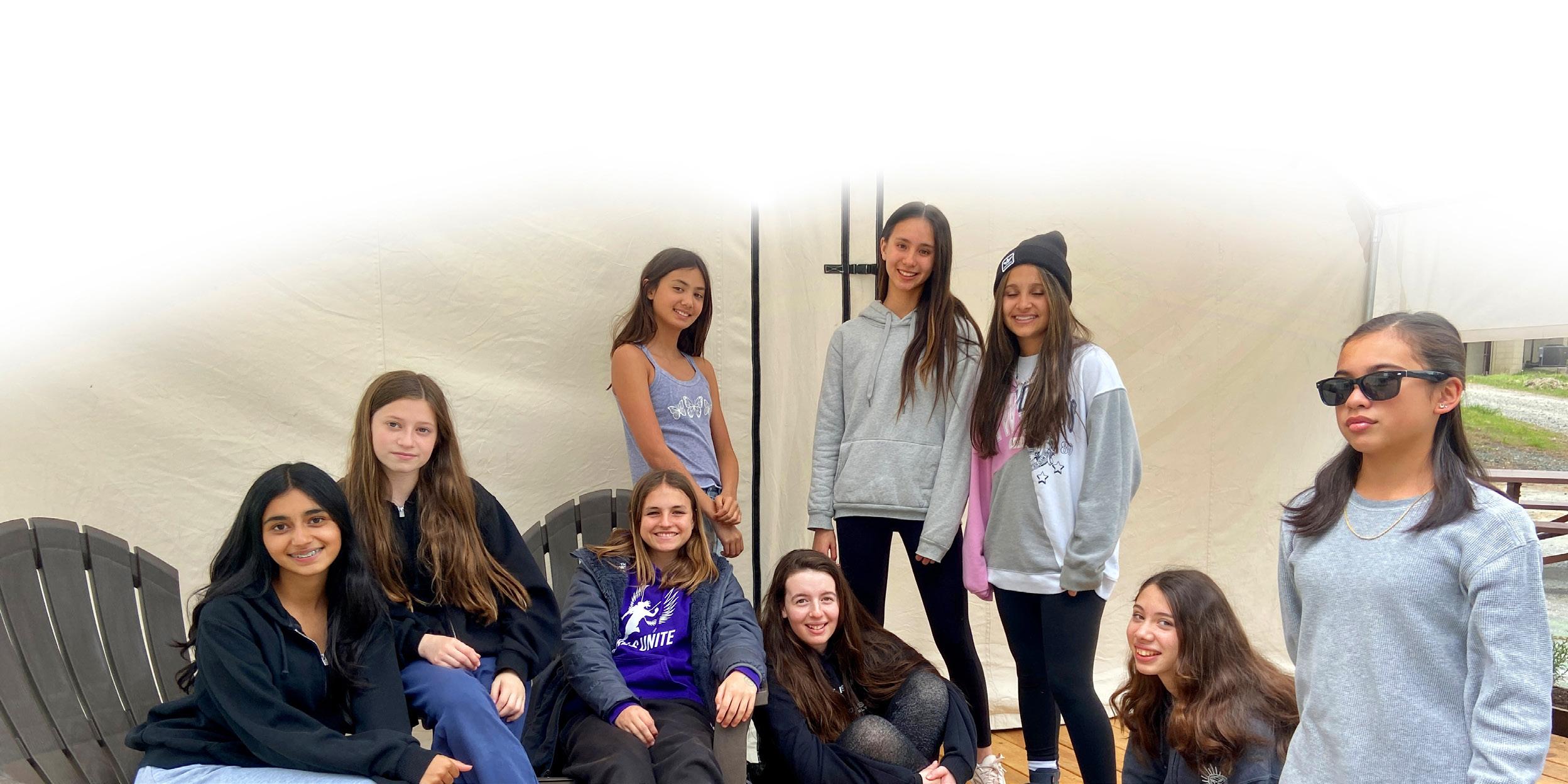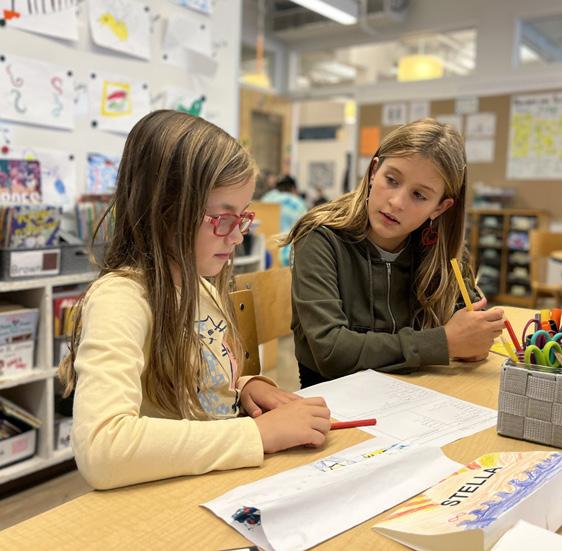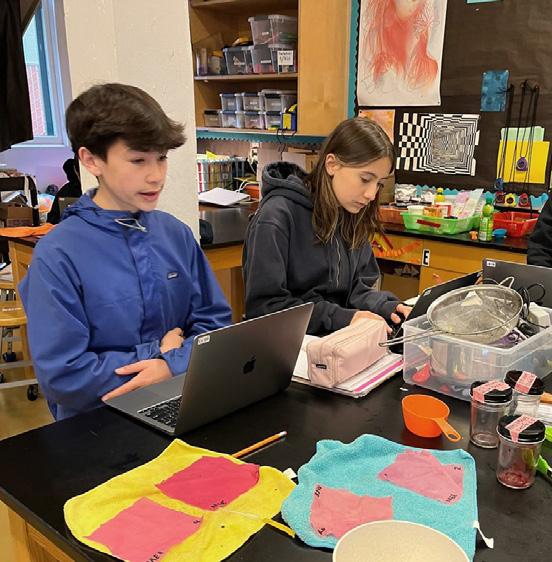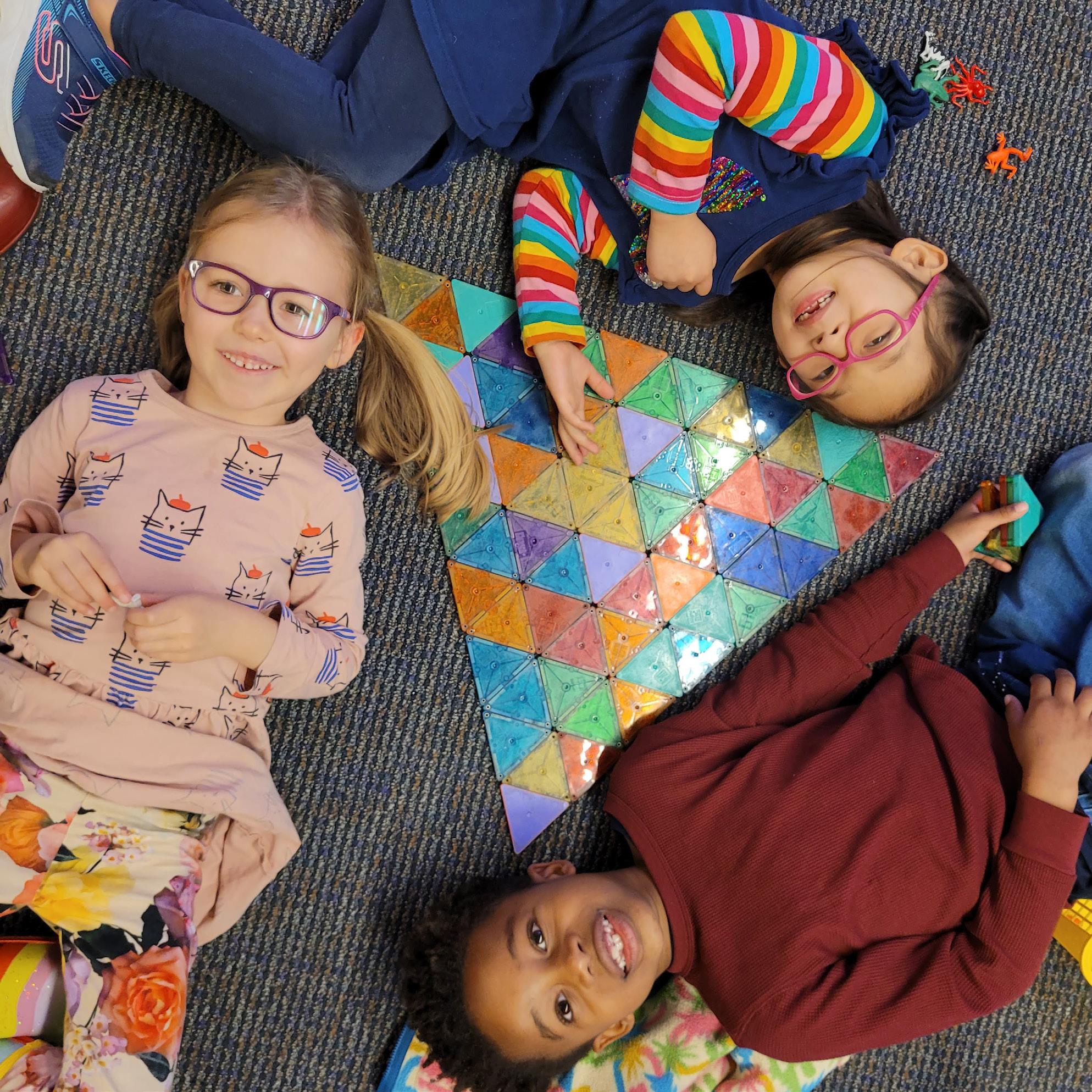
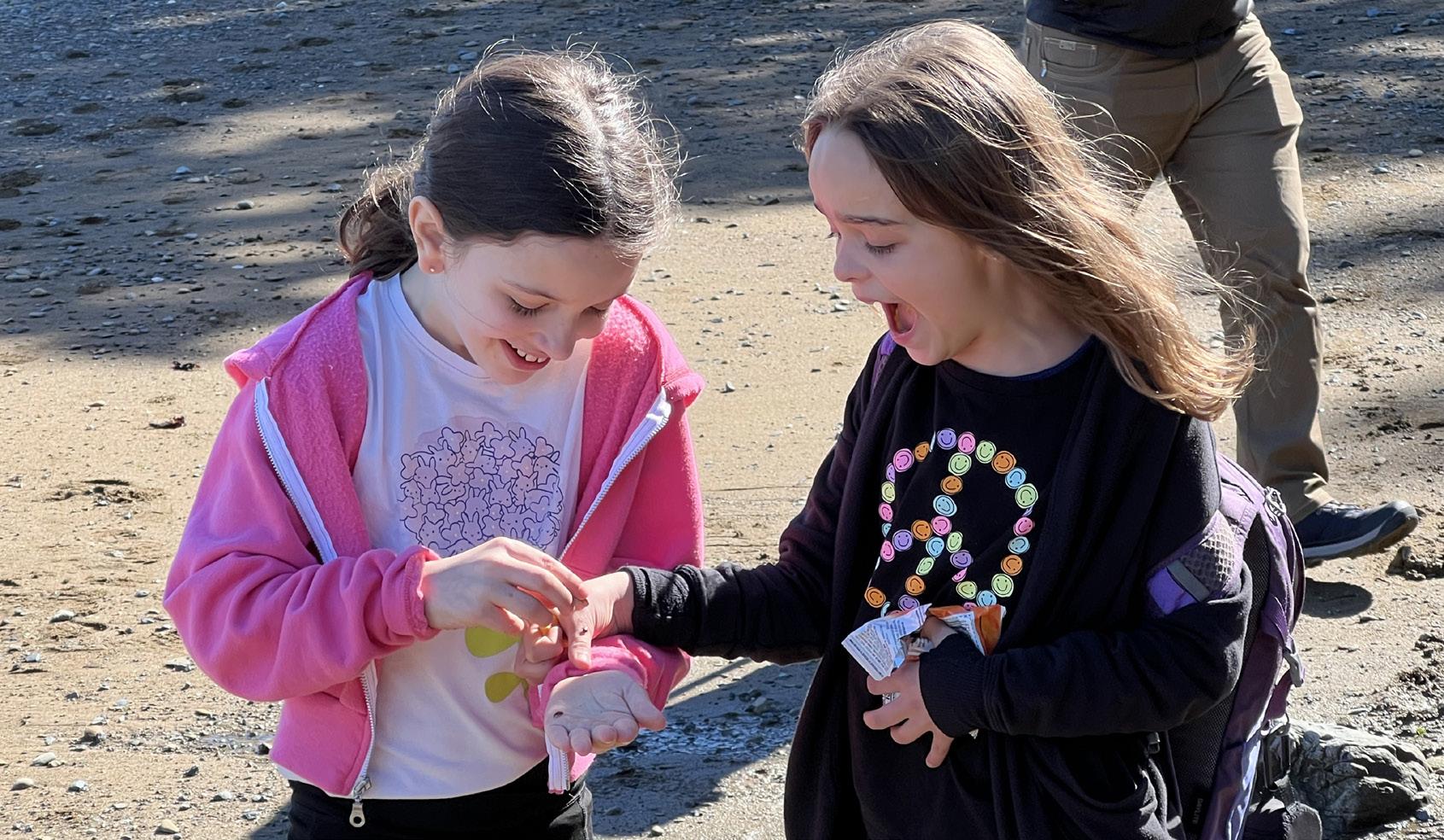
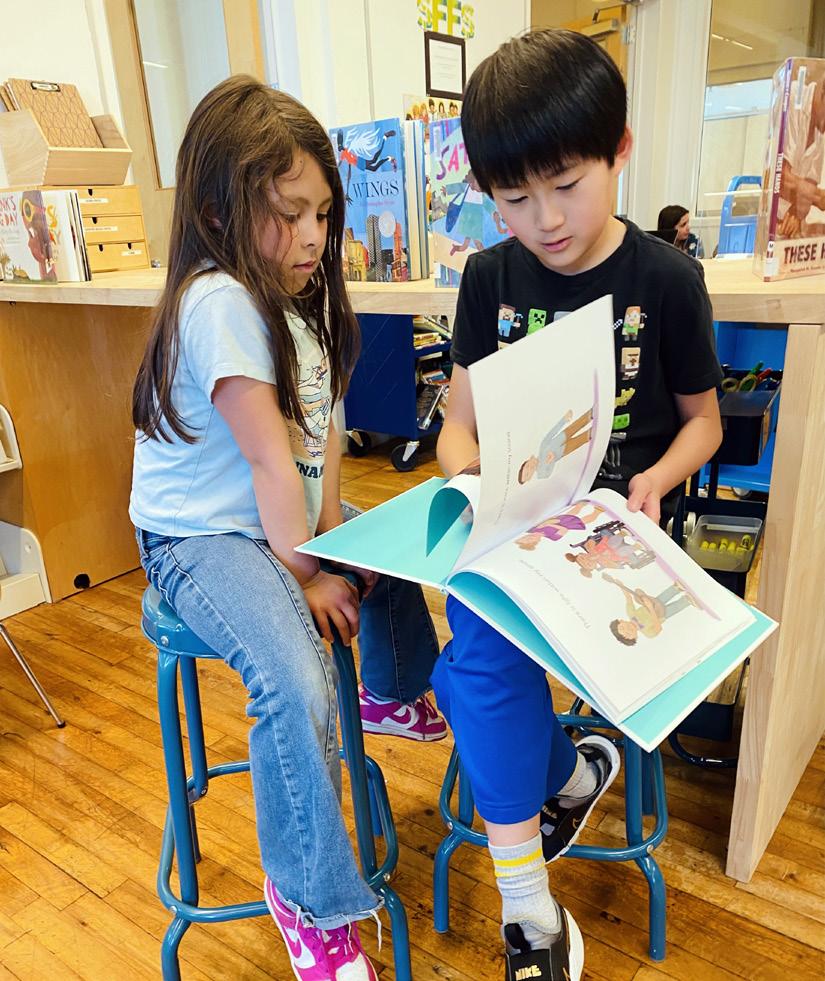

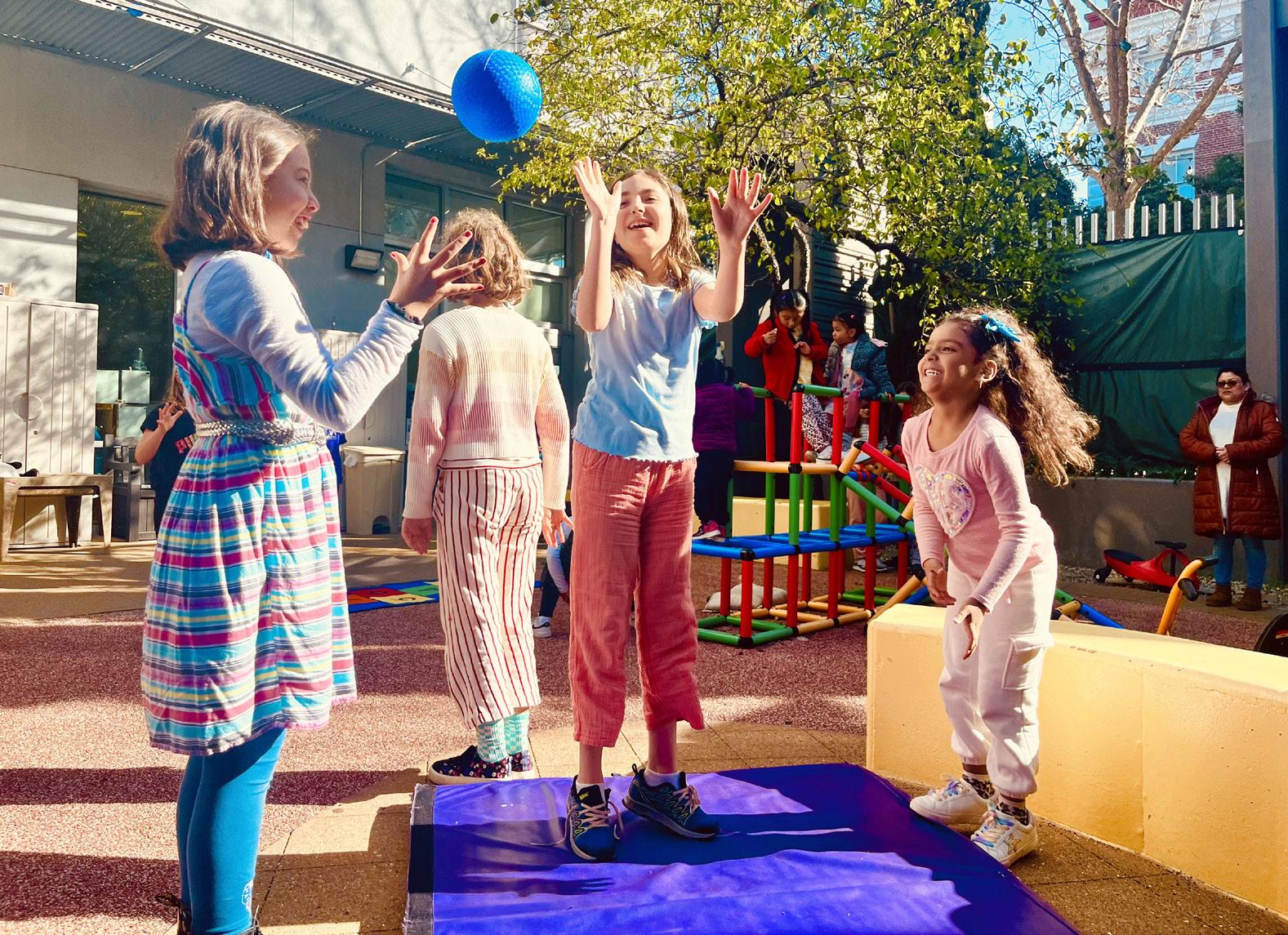
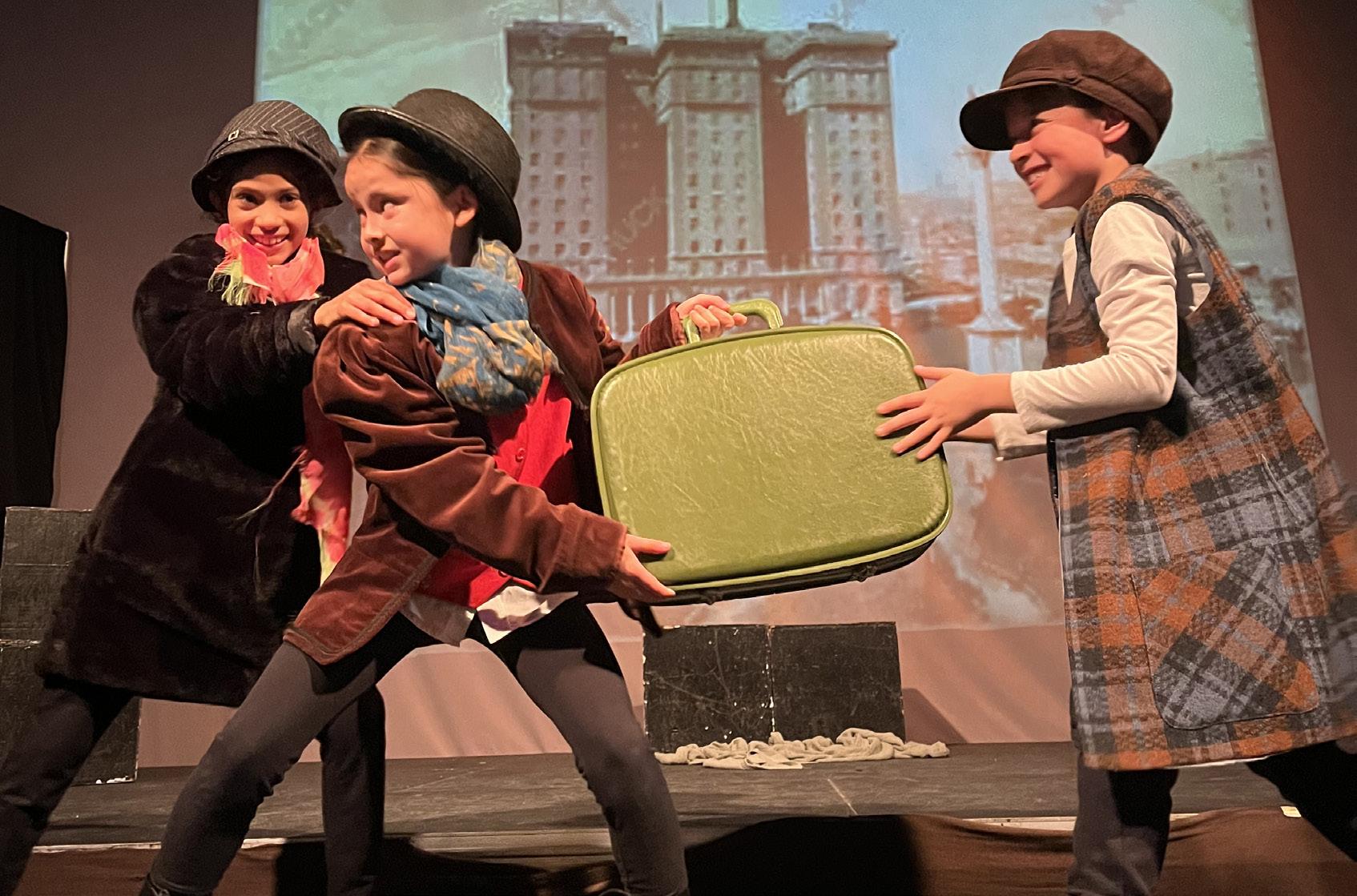









I’m delighted to welcome you to the San Francisco Friends School community! We are so happy you will be joining us this fall.
I can distinctly remember the first time I visited SFFS. The sense of warmth and belonging is quickly felt and witnessed as you come through the doors at 250 Valencia Street–be it in the classroom, on the Front Yard, or in the hallways during Morning Meetings. Our students are seen and known in a nurturing and close knit community of faculty and staff. The underpinning of Quaker values in our program— the “SPICES”—as we lovingly call them—provide a ripe foundation for students and teachers to find and work with a sense of shared purpose. Coupled with a constructivist approach in the classroom, SFFS enables students to develop agency and confidence in these early developmental years.
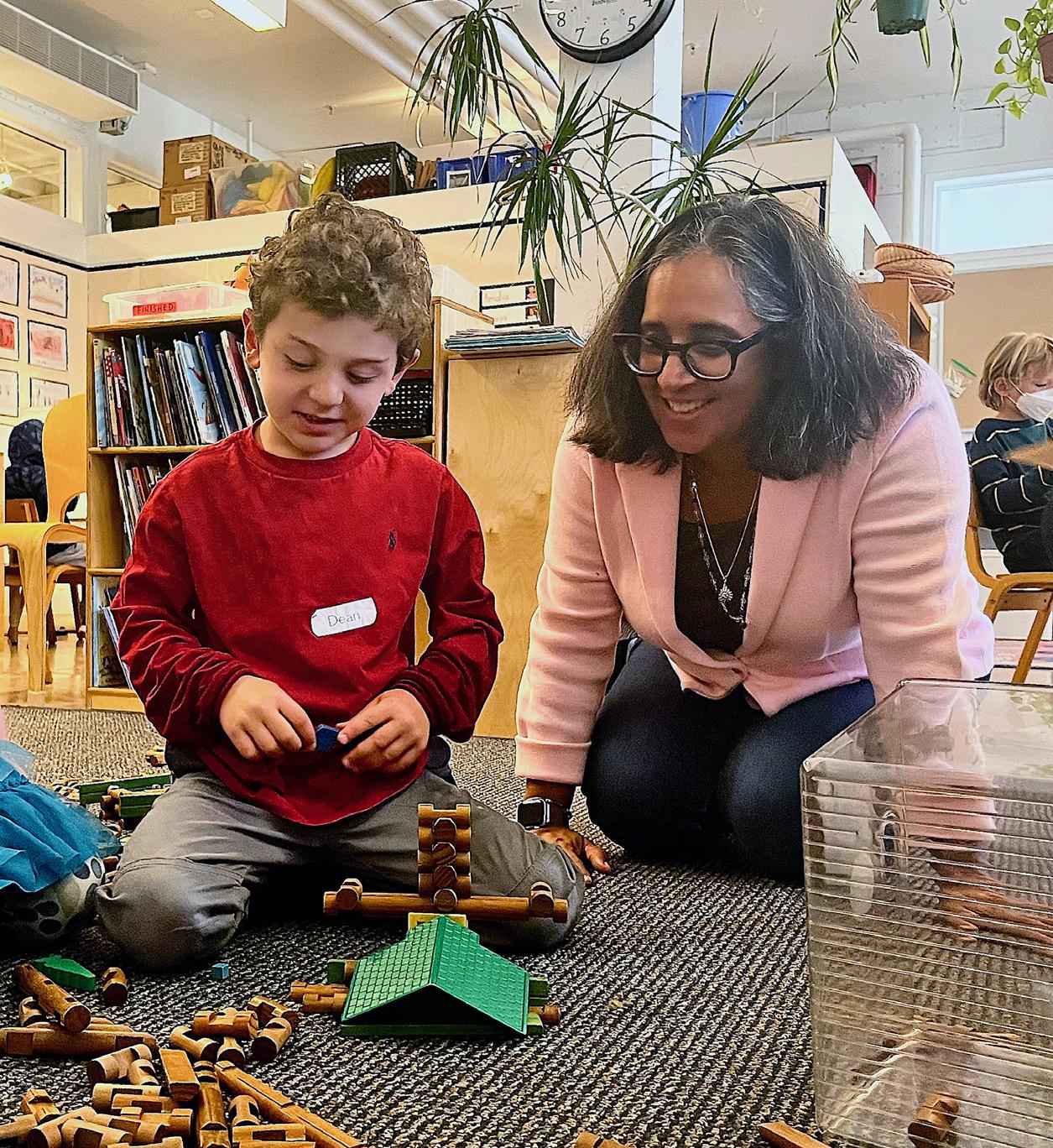
Through an academic program that is intellectually engaging, purposeful, and affirming of the spirit of each child, our teachers intentionally cultivate classrooms that are rooted in inquiry and connected to the world beyond. Along the way we seize every opportunity to lear n in and from our neighborhood, our city, and the entire Bay Area—and we embrace our responsibility to contribute. From delivering homemade bread to GLIDE to weekly 4th grade trips to Mission Head Start to read to preschoolers in Spanish, our home in the Mission anchors us as a community. Our students graduate from Friends with a sense of their education as both a joyful and meaningful journey. Our students learn how to listen, see the inner light in others, take in multiple perspectives, and identify a sense of personal responsibility for the world we live in.
We look forward to guiding your children to expand their sense of wonder; to hone their skills as connectors and problem-solvers; and to strengthen their commitment and understanding of what it means to belong to this diverse and intentional community.
I am honored to welcome you to our school and to lead the San Francisco Friends School community. I look forward to getting to know one another in the years ahead, and I know that your children will thrive in our vibrant, diverse and unique Quaker setting.
In friendship, Pankti Sevak

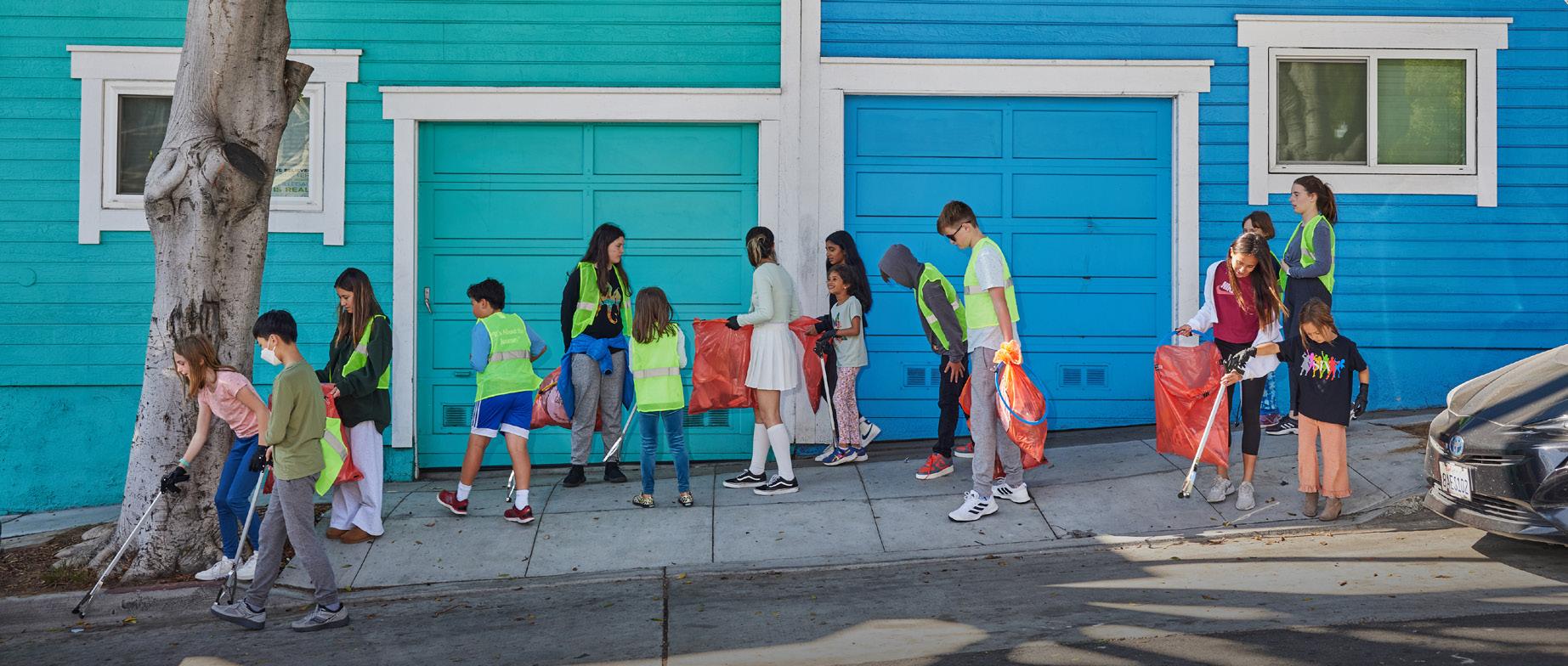
Welcome! We are so glad you’ll be joining the SFFS community in Fall 2024. There are many ways to get involved and connect here, but we know It can be overwhelming! Below we’ve listed some of the opportunities to connect and contribute to our community, based on your interests and availability. However (or whether!) you choose to connect, your voice and experience are valued.
Here are a few ideas for how you can make a difference at SFFS:
With a total of 19 PGA Committees at Friends, there are many opportunities for you to engage, apply your special talents, and meet many other amazing parents/guardians and families. And each committee varies in time commitment: from as little as annually or quarterly to monthly.
• Want a hands-on activity? Bring snacks for teachers and staff on a Wednesday through the Teacher Staff Appreciation Committee
• Passionate about Equity and Inclusion? Join the Diversity, Equity, Inclusion and Belonging (DIEB) Committee.
• Busy during the school day? Consider signing up to help plan an event like Giants Night or the MLK Day March—much of that work can happen on a flexible schedule.
• Looking for something you can do with your kids on the weekend? Join the Service Committee and volunteer with Buena Vista Horace Mann or for our monthly neighborhood clean up
• Want to share your excitement about Friends with prospective families? Join the Admissions Committee. It’s a great way to learn all about the school and meet other parents.
You can learn more by:
• Checking out the PGA page on SFFS Family Portal which lists volunteer opportunities and community events
• Emailing one of us, Meno or Adam, this year’s PGA Co-clerks at pga-clerk@sffriendsschool.org
• Asking your buddy family about their involvement/experience
The mission of the SFFS Parent Guardian Association (PGA) is to:
• Support our school’s needs and continued growth
• Strengthen our broader school community by promoting engagement
• Coordinate interactions between the parent/guardian community and the school
There is no membership fee to be a part of the Parent Guardian Association and there is no obligation or requirement of any kind. If you have any questions, please contact the PGA co-clerks at pga-clerk@sffriendsschool.org
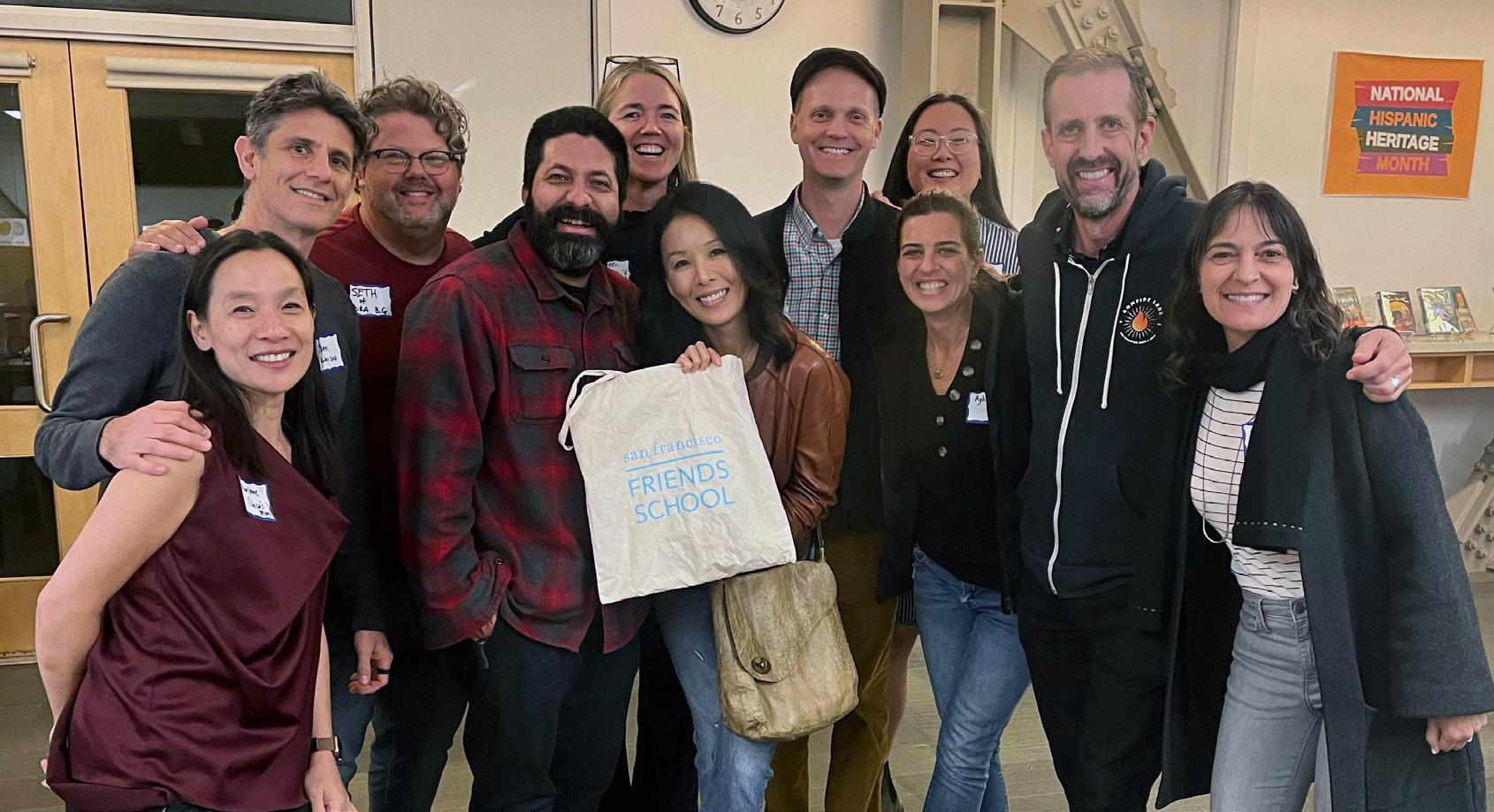
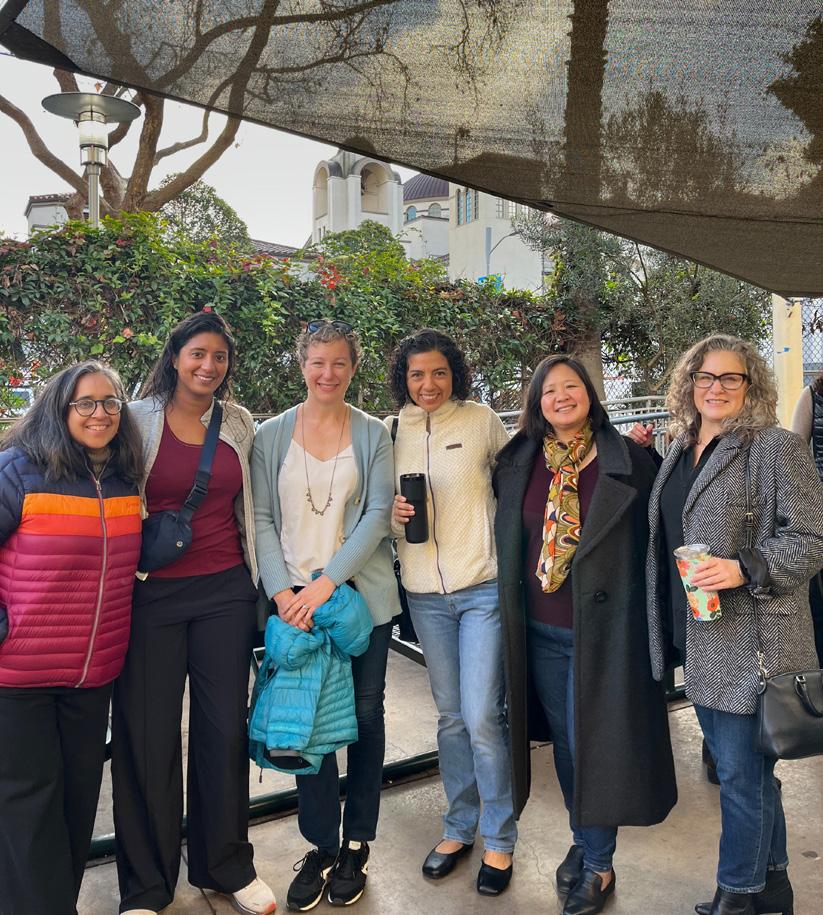

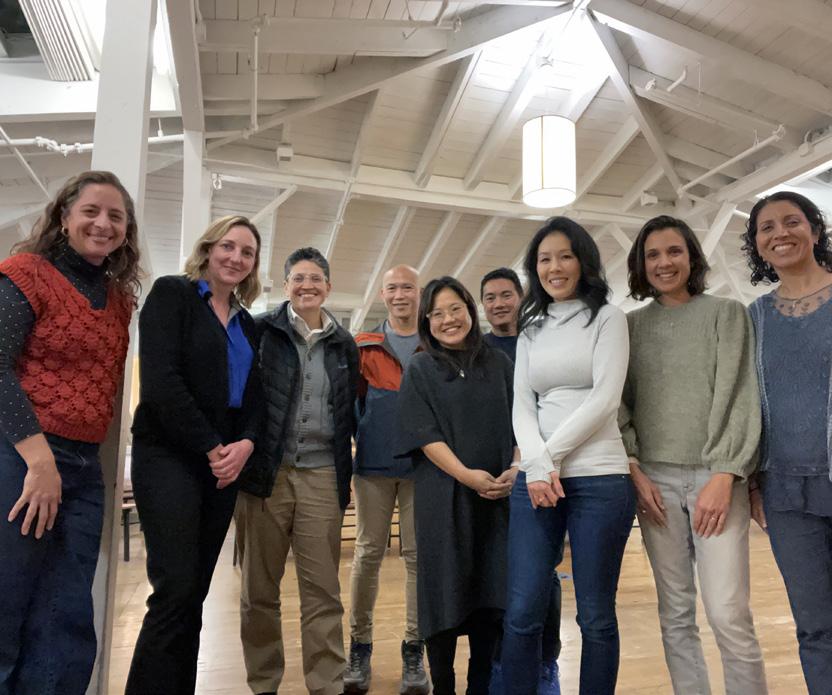

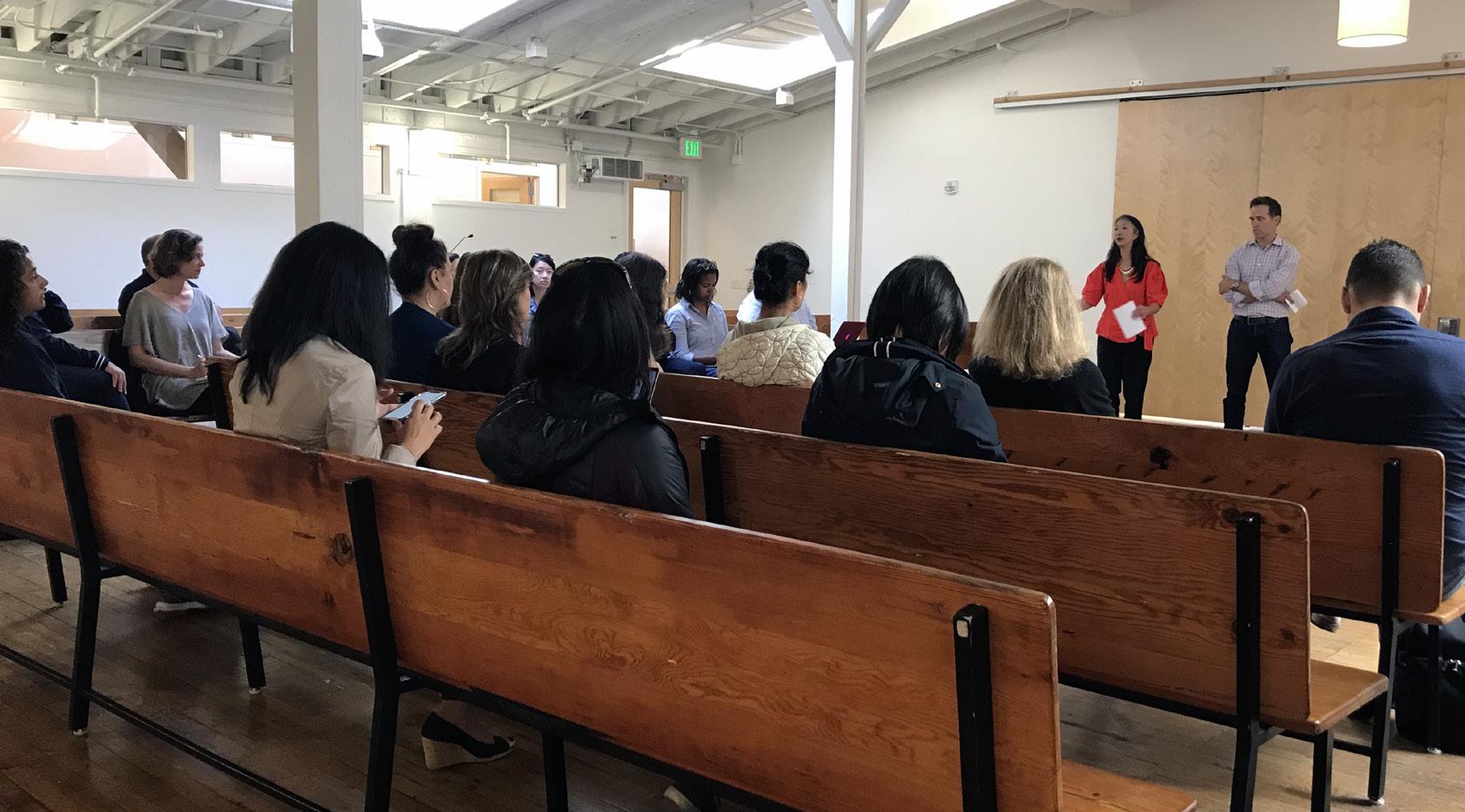
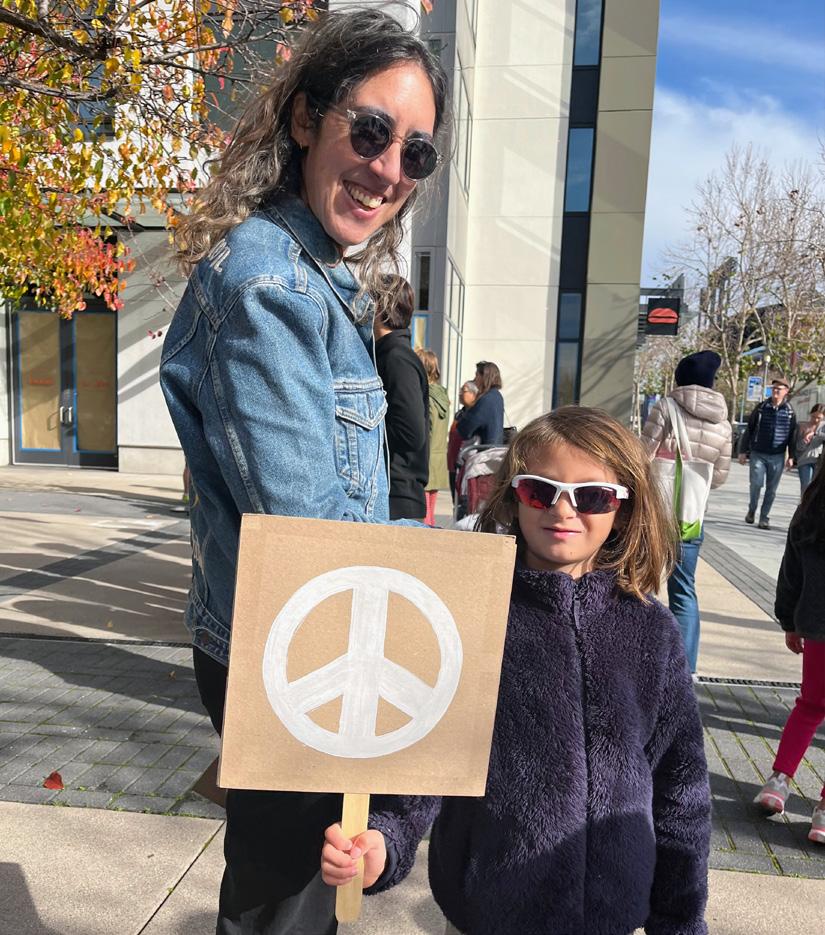
By the Eighth Grade Team
WANTED: Four sensitive, articulate, caring eighth graders who understand, respect, and facilitate (Quaker) consensus-building for the eighth grade class issues.
These brave four are not your typical “studentcouncil” type leaders. They don’t insert their opinions and ideas or push their own agenda. Rather, they are facilitators who organize, listen, record, reflect back, restate, synthesize, and summarize the opinion of the group. And in the Quaker tradition they don’t call for a vote but rather strive for consensus.
They ask classmates to speak in favor of an opinion or speak against one. They strive for equity and equality in the process. They settle the loquacious and they elicit feedback from the quiet ensuring all voices are heard and valued.
This “ad” describes the qualities needed to be an eighth grade Class Clerk. Eighth graders nominate themselves and/or their peers by writing about the qualities and habits they possess that would make them right for the position. These applications are reviewed by a committee and the clerks are selected in early November.
The eighth grade Class Clerks are in charge of running the weekly or bi-weekly class Meetings for Business (MFB). Quaker Meetings for Business are traditionally used to make decisions in a “worship” style, where reflection and silence are central to the process. At SFFS, eighth graders use MFB to consider important class agenda items of a philosophical or practical
nature. This is the lightest of issues they encounter during the year and Clerks use this initial meeting to practice the skills they will use during more substantial discussions later in the year, such as what their class quote for the school will be.
Other MFB topics might include: addressing issues in our after-school program, After3 (A3); revisiting the computer policy; addressing homework load; looking at the policy designating eating/playing times at lunch; managing stress; or supporting one another during the high school process.
If you appreciate being able to text your middle schooler during A3 to let them know when to meet you outside the building, you can thank previous years’ graduating eighth graders and their Clerks for addressing the issue of cell phone use in their Meetings for Business.
A MFB always has a desired outcome, but the outcome is not always an action item. For example, a desired outcome for a MFB about managing stress might be to collectively create a list of strategies students can use for handling homework or high school application stress, while a “computer policy” MFB might result in a change in the ways students use computers.

Running a MFB is not an easy task! Try to remember the last time you were in a work meeting where all voices were heard and where a decision was not made until the whole group signed off on it. The Clerks patiently elicit ideas from peers, recording them and trying to get a “sense of the group” while different individuals provide opinions or insight into the situation. Through hearing many viewpoints, the sense of the group often emerges. As the Clerks decide how to move the group forward, they might ask if anyone is not willing to “stand aside” (meaning that they are unable or unwilling to go along with the larger group’s decision). In case one or more students are not willing to stand aside, the Clerks will continue to facilitate a discussion so that those voices of objections may be heard in greater depth.
Making mistakes is a natural part of learning.

When we see toddlers learning to walk, we celebrate and encourage their struggles and tumbles along the way to getting on their feet. Inspired by our encouragement and our enthusiasm, they continue to strive to do their best. As time goes on though, it’s easy to overlook these sorts of learning missteps for what they are: natural opportunities to grow, and moments to reflect on the progress we’ve made. Teaching our students that mistakes will happen, giving feedback, and celebrating the stumbles along the way, is part of developing our resilient risk takers.
To further develop this concept of mistake making as a necessity for growth, in second grade, we begin by reading the Barney Saltzberg book, “Beautiful Oops!”
Each page of the book depicts, with the use of pop-ups, tears, folds, holes and paint splotches, how each and every perceived mistake is an opportunity to make something surprising, innovative, and often more creative than originally envisioned.

After reading the story, each student is given a scrap piece of paper to create their own “oops” that is then passed on to a classmate to be made into something new and wonderful. Each student is tasked with taking a torn piece of paper, scribbled line or small hole and re-envisioning it as something beautiful.

Making mistakes can be a daunting task, at any age, when so many of us prefer to work in the security of our plans and visions. This leap we ask our students to make reinforces the need for flexibility and imagination in the work that they do. We finish the activity with a share-out of what developed from the original “oops,” celebrating mistakes and the unexpected joys they can bring.
As teachers we strive to model this process for our students in our own teaching practices. Whether it is a misspelled word in the morning message or a lesson that didn’t quite land the way we had intended, our transparency can serve as a reminder that when we have the courage to acknowledge our mistakes, real growth can happen, even for adults.
Mistake Celebrations are an opportunity to embrace and model resilience for our students. Taking a moment to share a misstep and how we handled it helps deconstruct the notion that getting it right the first time is the only way. In a culture that celebrates innovation and progress, it can all begin with one wrong move.
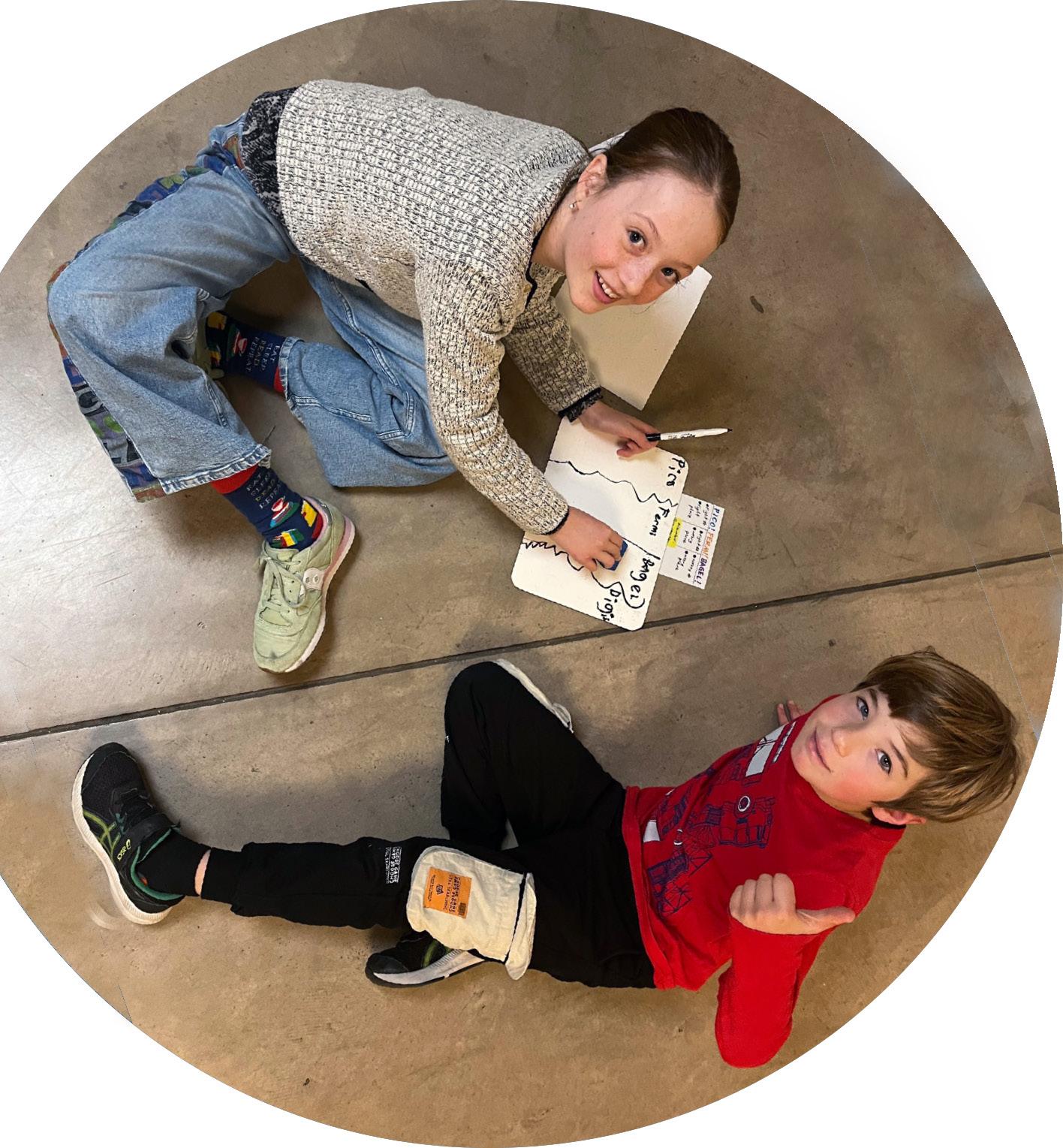
Each fall our teachers begin planning the arc of our K-8 buddy program for the new school year. From the children’s viewpoint, facing the unknown can be fraught with anticipation: Who will my new buddy be? What if I don’t like my new buddy? Might it be my best friend’s sibling? Even so, as we build up to the new buddy year, the students at Friends are full of excitement, curiosity and a shared sense of community.
Each year every student at Friends is “buddied” up with a new child from their buddy grade, and through a variety of projects and events, children learn from and with each other, and they develop ties within the broader community of children. We have monthly buddy assemblies, and a distinct rotation every month designated for buddies to spend part of the afternoon together in a variety of projects. Partnered together each year are first graders and fifth graders, second and sixth, third and seventh, and a “family grouping” of kindergarten, fourth, and eighth graders.
From reading published stories together, to sharing service learning project work, these consistent buddy grade pairings help teachers across the grades deepen the program over time, as they get to know each other’s curriculum and students. As well, children grow with each other, and follow their buddy grade on into their graduation year. Fourth graders spend a year as the “middle child” before becoming the official older buddies throughout the middle years. In our annual End of Year Celebration, our K/8 buddy dance is a lively representation of the relationships children have developed over time, and a deeply felt send off for our graduates and their families.
At the first few buddy meetings, you will find children meeting and greeting each other for the first time, playing games, reading stories alongside one another, interviewing each other, or making up a buddy handshake.
If you happened upon the Meeting Room space some years back, here’s what you would have seen on the launch of the buddy program in September: four rows of white paper laid across the entire length of the room, and all the seventh graders sitting on one side of each row of paper. On that day, it made me stop with a true sense of curiosity and I wondered:
what would be happening here exactly? Then, in walked the third graders and, in silent confidence, they sat directly across from someone familiar and safe—last year’s buddy, of course. The sense in the room was a mix of familiarity and coming newness.
Setting children up for a new challenge, social or academic, can be tough, and these teachers knew how to bring a sense of calm and adventure into the room, readying the children for a transition.
The teachers let the old buddies reflect and connect, and several children shared aloud things about their last year’s buddy. Then, to my surprise, the teachers had all the children stand and move in a dance-like rotation around the papers, only to find themselves sitting across from someone new. My new buddy? Not yet! The next step involved a series of challenges each third and seventh grade pair had to solve together (build the tallest tower, make an animal) with a limited number of marshmallows and toothpicks. (First, the seventh graders had to give direction, then the third graders, while the opposing partners could not speak at all.) The children were completely engaged, listening closely, clearly communicating, working towards a common goal. The teachers were observing closely, a few even taking notes to help them make decisions about who might be a good fit for a buddy pairing this year (a decision that wouldn’t even be happening at this buddy meeting).
The purpose was to connect, to work together, to build trust. You left the room feeling like it didn’t matter who your buddy was going to be, but that the third and seventh graders felt like one small community. It was a beautiful thing to watch—a highly orchestrated lesson for a group of almost 100 kids set to sail by a crew of master teachers. Teachers are like architects, setting up the environment with a purpose in mind to engage curiosity and provoke students towards a new challenge. Here was a masterful example of this creative process of teaching at work.
We often say that how we teach (pedagogy) is as important as what we teach (content), that the set up can determine the outcome, and purpose really matters to us. If the purpose of buddies is to build a trusting community (all necessary factors for any real learning to take place) these teachers had thought clearly about how to put that purpose into practice. It doesn’t matter if your buddy becomes your best friend, but that you work to try to connect with someone different than you. You lead some, you follow some, you adapt, you learn something about your school, and you will be changed because of it. Our buddy program has grown richer every year, enriching our students’ healthy sense of relationships, trust, challenge, familiarity, and community.
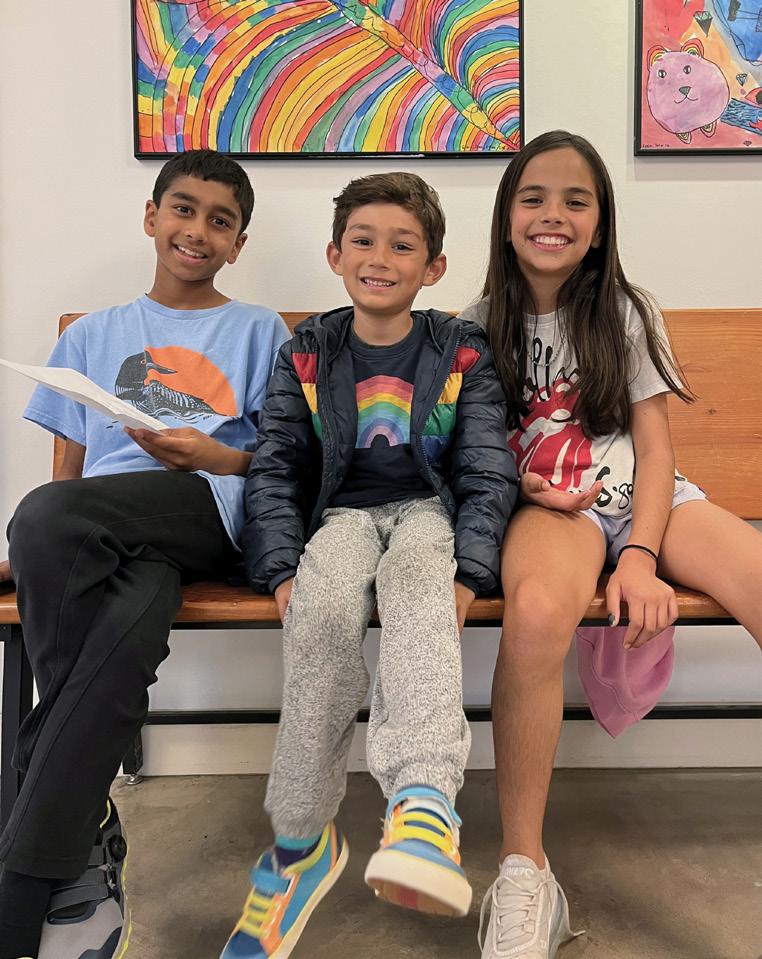
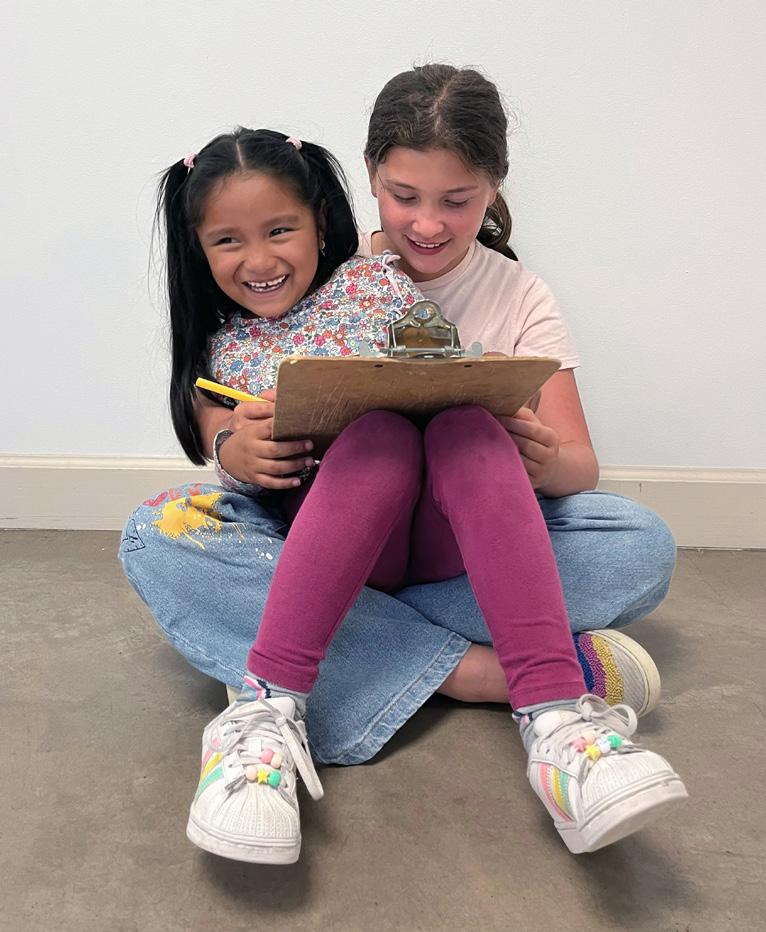
“At the first few buddy meetings, you will find children meeting and greeting each other for the first time, playing games, reading stories alongside one another, interviewing each other, or making up a buddy handshake.”
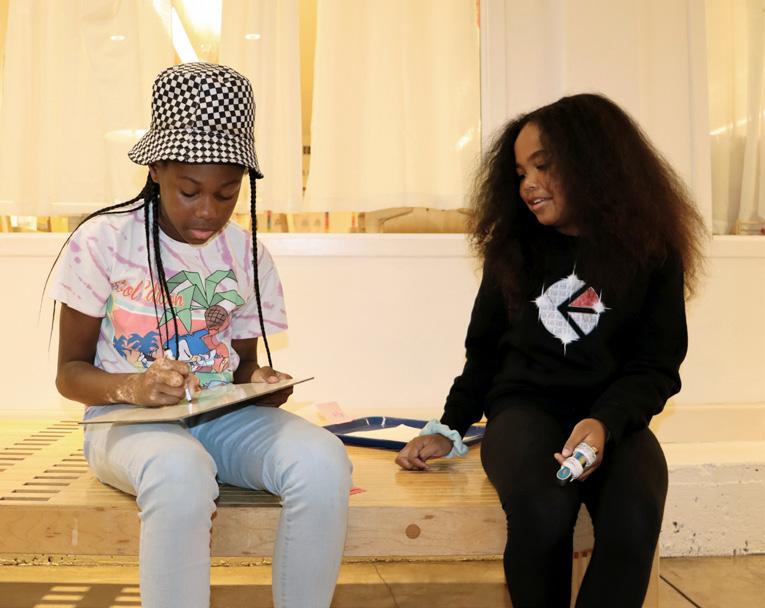

I didn’t grow up going to church, synagogue, or a traditional place of worship. My brother and I “swore to Mother Nature” when it was really a serious truth instead of swearing to God, and our place of worship was the American River Canyon or the open granite of Desolation Wilderness. These places did and do fill my soul’s longing for that awesome perspective of being part of something bigger, but my moments in them don’t always come with the rooted-in-community part of worship that I imagine is a huge part of many peoples’ experience with religious traditions.
Going to the San Francisco Friends Meeting (not to be confused with the Friends School Meeting for Worship) has given me the chance to spend a Sunday both to re-ground myself and to feel that I am part of something big and rich. I realize now that I have been subconsciously seeking this during the often breakneck pace of my family’s complex and urban life.
Part of why I love SFFS so much is because every time I walk into the school, I feel a sense of rootedness and community, and unexpectedly, I really appreciate how tied this sense feels to a deeper tradition of spirituality and worship. Visiting the San Francisco Meeting for the shared January Meeting for Worship has both scratched the chance-to-worship itch I didn’t know I had, and also helped me to understand how SFFS grows forth from the deep roots and values of the Religious Society of Friends. A few years ago, our January Meeting together was the day after the Women’s March—a great time to sit in silence and reflection together with a group of people who count a commitment to social justice as a core part of their beings. This time, when our kids came back from the children’s program they came with postcards they had written to their elected representatives about changes
they would like to see to improve their communities and the current political and social discourse. I remember my partner Doug commenting on this “definitely being San Francisco” with an appreciation of the great delta between his experience in Sunday school on the Upper East Side (and some resulting *slight* discomfort at the idea of his 6 year-old writing a protest letter the day after joining a protest march). His discomfort came with a hearty willingness to embrace this new experience—one of the many reasons I love him. And I remember thinking this isn’t just a San Francisco thing, this is a Quaker thing.
When a teacher friend of mine recently roamed our school’s hallways, he said he couldn’t believe the level and depth of engagement that Friends students have regarding social justice issues. It struck him that our teachers and students were not only raising, but really grappling with, the messiness and complexity of issues that faculty at his school wouldn’t feel comfortable discussing. And as a teacher, he was jealous of this real discourse.
Because we all as community members are living through this hard stuff together, it seems weird not to talk about it. The commitment to social justice and the process of grappling with messiness are a part of our school’s Quaker DNA, and I loved getting more of a window into that at the Friends Meeting.
Each time I go to a Friends Meeting, I am reminded of how grateful I am for the tenets, values, and spiritual compass that guide our kids’ education—and the deep roots that tie us to a broader history and community. I treasure these minutes of communal reflection and seeking each year, for myself and for my family.
Hi, my name is Paloma Seligman, I am currently an 8th-grade student at SFFS. I have attended Friends since kindergarten. I am so excited that you have decided to join the SFFS community! I want to share what makes Friends unique. Here are a few instances where SFFS has demonstrated its ability to instill compassion, confidence, and perseverance in its students.
In fourth grade, our teacher Maureen Ray had a unit where we wrote short chapter books in the month of November as a part of NaNoRimo or National Novel Writing Month. At the time I didn’t consider myself a writer or thought it was something you could be passionate about. This experience helped jumpstart my ever-growing passion for writing. Doing NaNoRimo I realized not to be afraid to try something new. Many teachers at Friends foster their student’s passions while encouraging them to take risks.
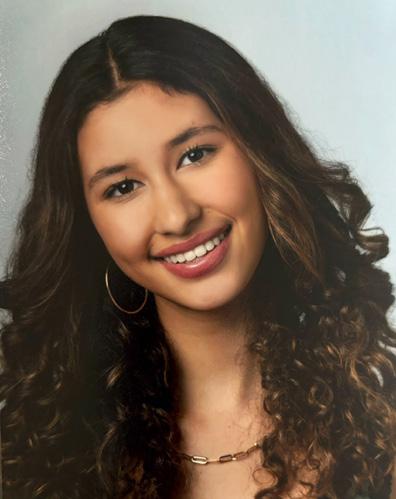
During 7th and 8th grade I co-lead an affinity group called Girl Talk which works on body positivity and the normalization of menstruation. This affinity group idea came to me in 7th grade because I independently read the graphic novel, Go With The Flow. This novel sparked my interest in menstruation and women’s rights. I then watched the documentary, Period. End of Sentence. The documentary discusses the challenges around the taboo topic of menstruation. After watching this documentary I was shocked and outraged by the ignorance around menstruation. I called my friend to discuss how we could raise awareness around this topic. When I got my period it made me self-conscious. After talking, my friend and I agreed nobody should have to experience this alone. Together we founded the affinity group, Girl Talk, with the coordinator’s permission. The goal of this group is to make sure people do not feel alone and to normalize the taboo topic of periods in our society. This process has been an empowering experience to know that my curiosity and passion can make a difference. Friends fosters leadership and allows their students to create change.
8th grade has been very bittersweet so far, I am very sad that I will be leaving this amazing school that has helped me become who I am today. I am excited to see what the future brings. At the beginning of 8th grade we applied to high schools which was stressful but this shared experience brought us closer as a grade. All of the teachers have been very supportive, which allowed us to form connections with them. The high school advisor Kristen Daniel helps this process become less stressful and more about what school feels right to you. Everyone at Friends became more of a family as the years progressed, I am going to keep in touch with many people from SFFS. Soon you will be a part of this big family and community. We are so happy to have you.
Sincerely,
Paloma Seligman, class of 2024